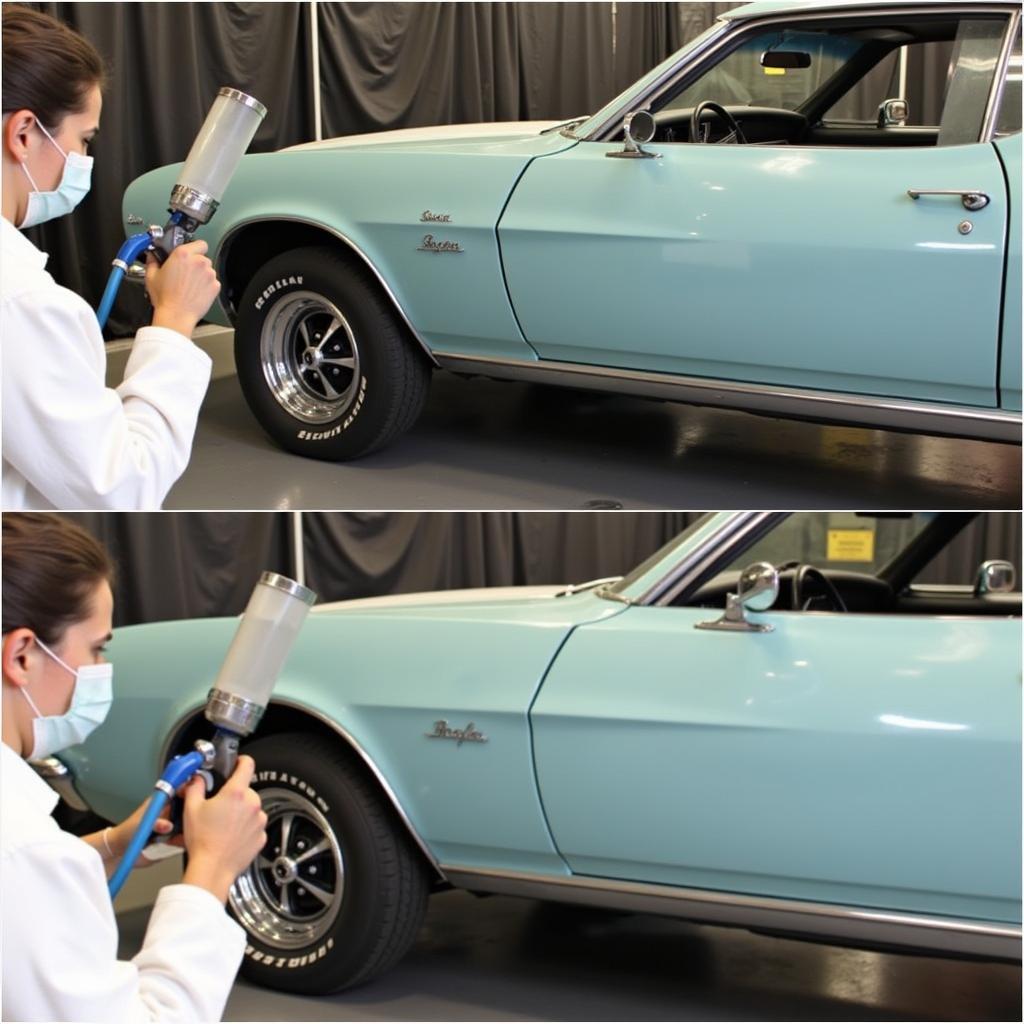Professionally detailing the undercarriage of a classic car is crucial for preservation and maintaining its value. It’s more than just a quick wash; it’s a meticulous process that requires the right tools, techniques, and patience. This guide will walk you through how to achieve a showroom-worthy undercarriage.
Preparing Your Classic Car for Undercarriage Detailing
Before you begin, gather your supplies. You’ll need a high-pressure washer, various brushes (including a wheel-well brush), degreaser, rust remover, undercoating, safety glasses, gloves, and jack stands. Ensure your car is parked on a level surface and secured with jack stands for safe access to the undercarriage.
Cleaning the Undercarriage
Start by rinsing the undercarriage with plain water to remove loose dirt and debris. Next, apply a specialized automotive degreaser, allowing it to dwell for the recommended time. This will break down built-up grease and grime. A crucial tip here is to avoid using harsh chemicals that could damage the original finish or underlying metal.
Next, use your high-pressure washer, starting at the front of the car and working your way back. Pay close attention to the wheel wells, suspension components, and frame rails. For stubborn grime, use a variety of brushes to agitate and loosen the dirt. Remember to rinse thoroughly after each section to prevent residue buildup.
Removing Rust and Protecting the Undercarriage
After cleaning, inspect the undercarriage for rust. Surface rust can be treated with a rust remover or converter. For more severe rust, mechanical removal with a wire brush or sandpaper may be necessary. Remember to wear appropriate safety gear during this process.
Once the rust is addressed, consider applying a protective undercoating. This will help prevent future rust formation and protect the undercarriage from road debris and salt. Choose an undercoating specifically designed for classic cars to ensure compatibility with the original finish.
 Applying Protective Undercoating to a Classic Car’s Undercarriage
Applying Protective Undercoating to a Classic Car’s Undercarriage
Maintaining a Clean Undercarriage
Regular maintenance is key to preserving your classic car’s undercarriage. Rinse the undercarriage after driving in rain or snow, especially in areas where road salt is used. Regularly inspect the undercarriage for signs of rust or damage. Addressing issues promptly will prevent them from becoming major problems.
Why Detailing the Undercarriage Matters
Detailing the undercarriage is not just about aesthetics; it’s about protecting your investment. A clean undercarriage helps prevent rust, which can significantly devalue a classic car. It also allows you to inspect for potential mechanical issues, such as leaks or damaged components.
How Often Should You Detail the Undercarriage?
The frequency of undercarriage detailing depends on your driving conditions and climate. In areas with harsh winters and road salt, more frequent cleaning is recommended. As a general rule, detailing the undercarriage every six months to a year is a good practice.
Conclusion
Professionally detailing the undercarriage of a classic car is an investment in its longevity and value. By following these steps, you can ensure your classic car’s undercarriage remains in pristine condition for years to come. Remember, regular maintenance is crucial for preventing rust and preserving the integrity of your classic car.
FAQ
- What type of degreaser is best for a classic car undercarriage?
- Can I use a wire wheel to remove rust from the undercarriage?
- What is the best type of undercoating for a classic car?
- How often should I inspect the undercarriage for rust?
- Is it necessary to detail the undercarriage if the car is stored indoors?
- Can I detail the undercarriage myself, or should I hire a professional?
- What are the signs of undercarriage damage?
Common Undercarriage Detailing Scenarios
- Dealing with heavy mud and grime buildup after off-road driving.
- Removing surface rust from suspension components.
- Protecting the undercarriage from road salt damage during winter.
- Addressing minor undercarriage damage from road debris.
Further Resources
- Check out our article on the best car detailing products for classic cars.
- Learn more about rust prevention techniques for classic cars.
Need help with your classic car’s undercarriage? Contact us via WhatsApp: +1(641)206-8880, or Email: [email protected]. We have a 24/7 customer support team ready to assist you.

Leave a Reply